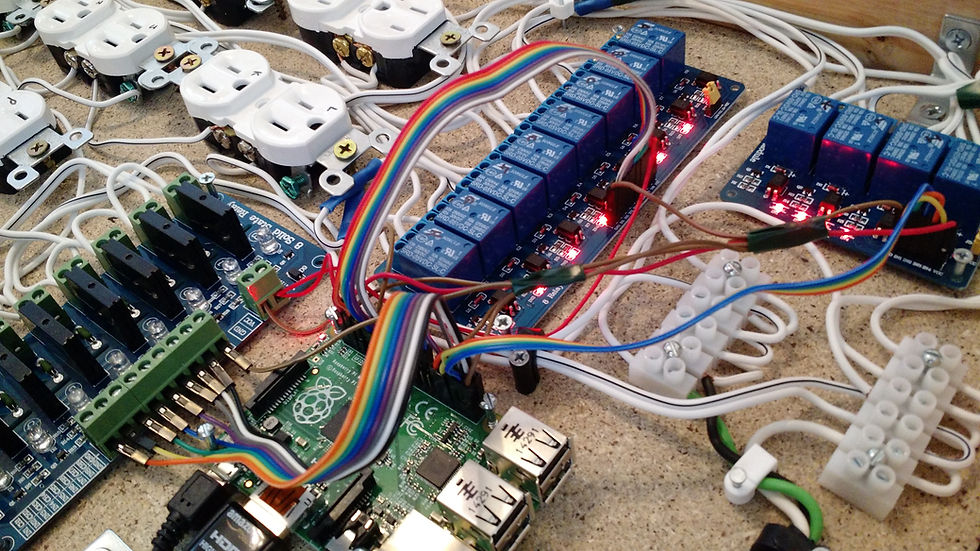Data Mining
- Debjoyti Louha
- May 13, 2021
- 4 min read

Data mining is the process of explaining the past and predicting the future through data analysis. This article discusses the data explosion in knowledge and answers the question "What is data mining" by introducing its definition. [Sources: 9, 18]
In concrete terms, data mining means analyzing data to look for patterns, correlations, trends and anomalies that may be relevant to a particular company. As much as it sounds, this type of data mining looks for associations between things, patterns, and correlations based on the enormous amounts of information we see in databases. There are different working methods, where the whole data and mining process involves the extraction of data patterns through different working methods. Features of data mining use the ability to detect groups or structures in data sets that are in some way similar to each other by using known structures and data. [Sources: 1, 5, 13, 16]
Whether you use a data mining approach or operation depends largely on the goal of the entire data and mining process. The data mining tool you need depends on what you want to implement, and the data mining process must be accessible to people who may have little or no knowledge of data processing in their background. It is equally important to find the right people to do it, whether it is someone who understands data science, data technology or data analysis, or to identify the best tools and tools available to your company and its employees. [Sources: 2, 7, 12, 13]
Data mining and data harvesting can go hand in hand with an organization's overall data analysis strategy. Data mining enables companies to gain understandable insights from their data, whether it is business data or open source data. [Sources: 2, 12]
Data mining is often used in science, where massive data sets are common and patterns cannot always be easily observed by simple data research. Data mining platforms include a variety of tools that are sometimes taken over from traditional data mining tools such as machine learning and deep learning. Some of the techniques used in data mining, such as deep neural networks and machine translation, are also used for machine learning. [Sources: 0, 1, 20]
This approach is used by researchers in a variety of fields such as computer science, computer engineering, mathematics and computer vision. This approach has been used for many years in the field of data mining, most recently by researchers from the University of California, San Diego, California State University, Los Angeles (UCSD). This approach is used by researchers in some areas of computer science, computer science and computer vision. [Sources: 15]
This Data Mining Guide explains the process in a simple and fundamental way and differs from company to company and case to case. This guide will provide an example - an introduction to the use of some of the most widely used data - as well as the use of machine learning. [Sources: 2, 11]
This course shows how to take raw data, process it and use it in data mining. Finally, we discuss various data mining techniques and select the best data mining tools for your business. [Sources: 2, 17]
The future for data mining and data science is bright, as the amount of data will only increase. Data mining is the big deal that can be achieved by working with big data. What follows is a look at how data mining has evolved and mixed with data science and big data. [Sources: 4, 10, 19]
Data mining is the process of understanding data by cleaning up raw data, finding patterns, creating models, and testing models. It is also called data mining and can be defined as a computer auxiliary method that combs through and analyzes enormous data sets and extracts knowledge and information from them. [Sources: 3, 9, 18]
Simply put, data mining is used to discover patterns and relationships in data to make better business decisions. The data scientists who produce data understand their business - mining models and data analysis. Data mining model can be used to mine the data on which it is based, and most types of models are generalizable to new data. In other words, many of the data mining tools are available for use in a wide range of industries, such as finance, insurance, healthcare, retail, education, healthcare, financial services, etc. [Sources: 2, 6, 8]
While data mining simply looks for patterns that are already present in the data, machine learning goes beyond what happened in the past to predict future outcomes based on pre-existing data. Data mining is designed to find patterns in data and use the results to learn about the new data; machine learning, on the other hand, goes beyond simply looking at the patterns already present in that data to predict future outcomes based on the data already available. [Sources: 1, 14]
Let us define the main task well - suitable for data mining, where the aim is to extract meaningful new information from data. One of the most important aspects of data mining (or any other type of machine learning) is the selection of data sources that can be used to obtain valuable information. The target data set must be specified, together with the data that is or is needed in data mining. This is the task of finding the patterns hidden in a huge amount of data and interpreting them. [Sources: 2, 6, 13, 18]
Sources:
[0]: https://www.sisense.com/glossary/data-mining-basics/
[1]: https://www.datamation.com/big-data/what-is-data-mining.html
[2]: https://www.astera.com/type/blog/a-quick-guide-to-data-mining/
[3]: https://www.tableau.com/learn/articles/what-is-data-mining
[4]: https://hackerbits.com/data/history-of-data-mining/
[5]: https://callminer.com/blog/what-is-data-mining-definition-techniques-tools-and-tips-from-experts/
[6]: https://tdan.com/data-mining-and-statistics-what-is-the-connection/5226
[7]: https://www.decisivedata.net/blog/7-essential-data-mining-techniques-you-need-to-know
[8]: https://docs.oracle.com/cd/B28359_01/datamine.111/b28129/process.htm
[9]: https://www.guru99.com/data-mining-tutorial.html
[10]: https://theappsolutions.com/blog/development/data-mining-guide/
[11]: https://www.springboard.com/blog/data-mining-python-tutorial/
[12]: https://www.import.io/post/the-difference-between-data-mining-data-harvesting/
[13]: https://www.cleverism.com/data-mining-and-data-mining-techniques/
[14]: https://bernardmarr.com/default.asp?contentID=1741
[15]: https://bigdata-madesimple.com/14-useful-applications-of-data-mining/
[16]: https://www.idginsiderpro.com/article/3218151/what-is-data-mining-how-analytics-uncovers-insights.html
[17]: https://www.edx.org/learn/data-mining
[18]: https://www.zentut.com/data-mining/what-is-data-mining/
[19]: https://www.talend.com/resources/what-is-data-mining/
[20]: https://www.softwareadvice.com/bi/data-mining-comparison/








Comments